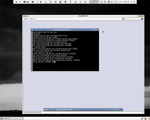Upcoming Fedora Test Days: preupgrade and Xfce!


So this week we round out the Fedora 13 Test Day schedule, which has seen us run the gauntlet from NFS, through color management and SSSD, scale the heights of Graphics Test Week, and will see us come to a triumphant finish with the Preupgrade Test Day on Thursday 2010-04-29 and the Xfce Test Day on Friday 2010-04-30.
These are two juicy topics: preupgrade is the recommended method for upgrading from one Fedora release to the next, and is widely used. We also really need to have it working properly at release time, so we need your help to test and make sure it is! Xfce is one of the most popular 'alternate' Linux desktops, and has a very dedicated Fedora SIG which works hard to provide a smooth experience and live spin, and has organized the Test Day to make sure the Fedora 13 Xfce experience is second to none. So please come out and help us polish off these final Fedora 13 features!
As always, the Test Days will run all day in the #fedora-test-day channel on Freenode IRC. If you're not sure about IRC, read the guide or use WebIRC. If you can't do the testing on the Test Day, you can still run through the tests and provide your results earlier or later; you'll just miss out on the real-time IRC discussion, but that's okay. You can do the Xfce testing with a live image which will be provided on the Test Day page. Obviously this isn't possible for the preupgrade testing, but you can test it in a virtual machine if you don't want to (or can't) mess with your real Fedora installation.
Testing is easy and there's lots of guidance on how to do the testing and file your results on the Wiki pages - you don't need any special skills to help out! Even if you get stuck, there will be QA team members, developers, and other testers on IRC to help you out. The more testing we get done the more polished Fedora 13 will be for everyone.
-

- Login or register to post comments
 Printer-friendly version
Printer-friendly version- 7919 reads
 PDF version
PDF version
More in Tux Machines
- Highlights
- Front Page
- Latest Headlines
- Archive
- Recent comments
- All-Time Popular Stories
- Hot Topics
- New Members
digiKam 7.7.0 is released
After three months of active maintenance and another bug triage, the digiKam team is proud to present version 7.7.0 of its open source digital photo manager. See below the list of most important features coming with this release.
|
Dilution and Misuse of the "Linux" Brand
|
Samsung, Red Hat to Work on Linux Drivers for Future Tech
The metaverse is expected to uproot system design as we know it, and Samsung is one of many hardware vendors re-imagining data center infrastructure in preparation for a parallel 3D world.
Samsung is working on new memory technologies that provide faster bandwidth inside hardware for data to travel between CPUs, storage and other computing resources. The company also announced it was partnering with Red Hat to ensure these technologies have Linux compatibility.
|
today's howtos
|









.svg_.png)
 Content (where original) is available under CC-BY-SA, copyrighted by original author/s.
Content (where original) is available under CC-BY-SA, copyrighted by original author/s.

Recent comments
1 year 11 weeks ago
1 year 11 weeks ago
1 year 11 weeks ago
1 year 11 weeks ago
1 year 11 weeks ago
1 year 11 weeks ago
1 year 11 weeks ago
1 year 11 weeks ago
1 year 11 weeks ago
1 year 11 weeks ago